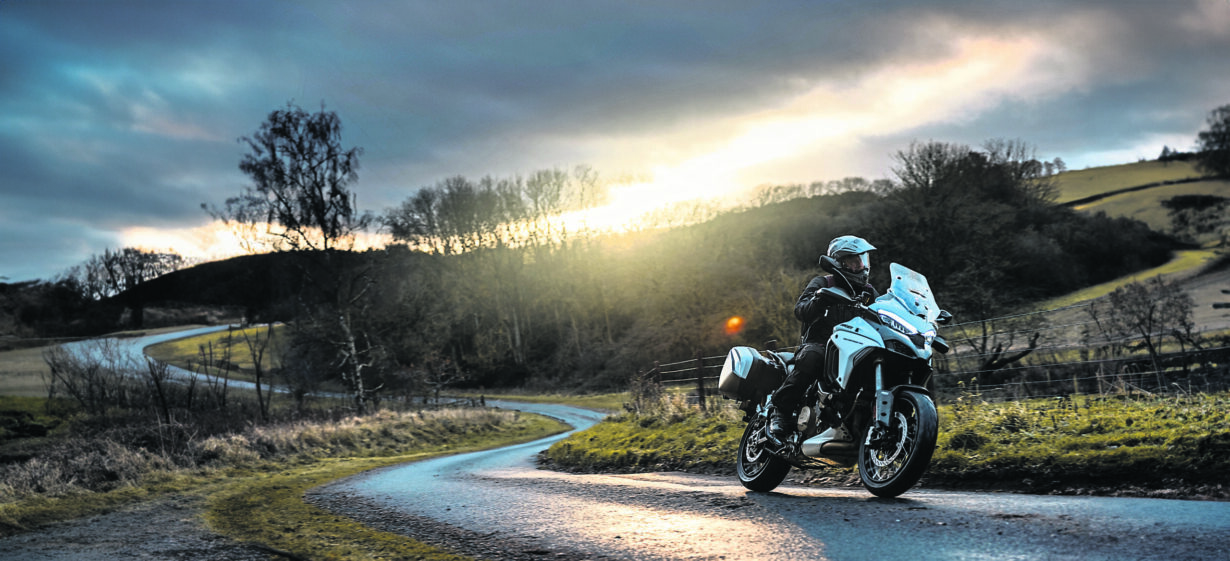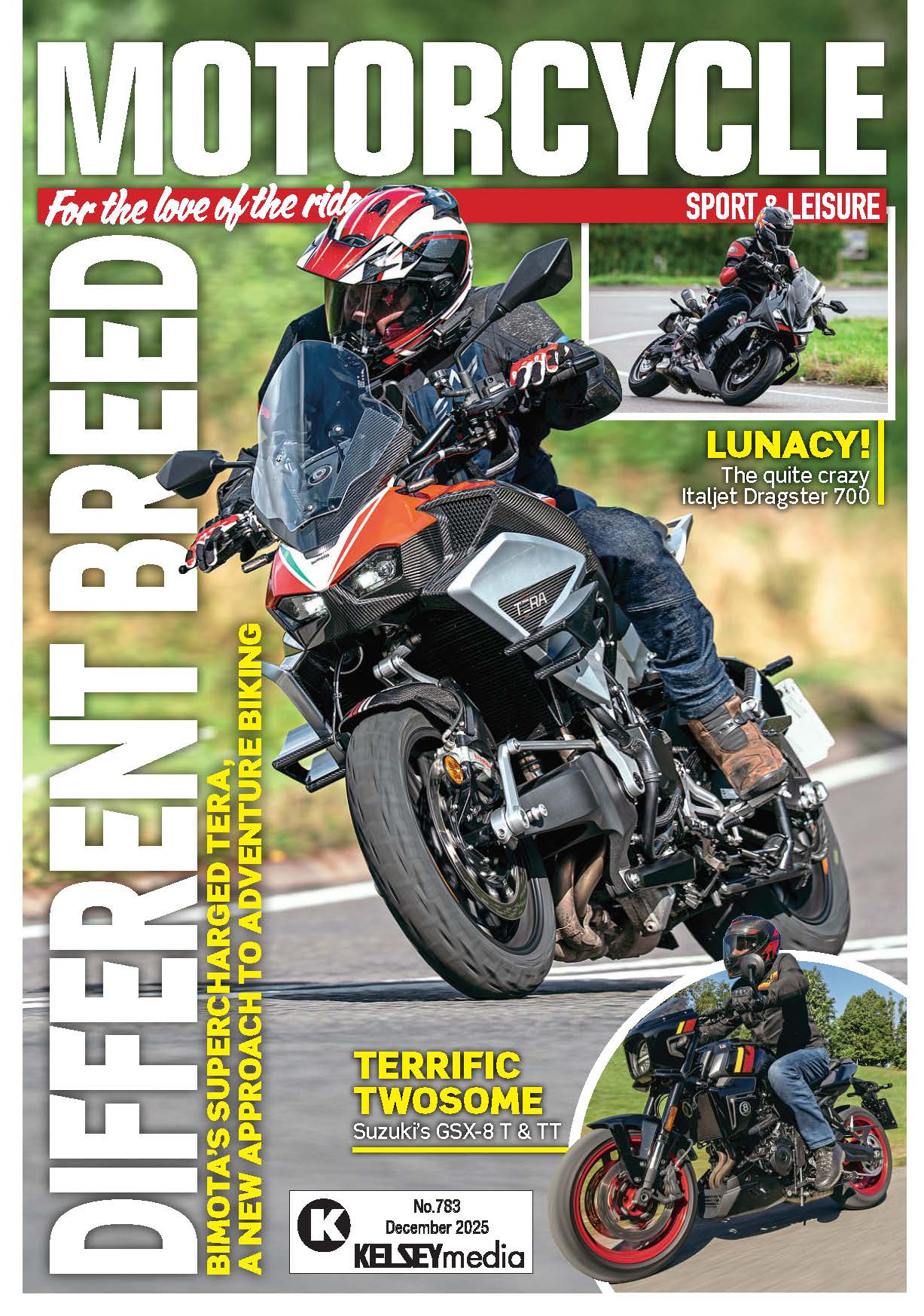Motorcyclists can often rely on a natural speed advantage, whether it’s about accelerating off the traffic lights, or carving lines on country roads. But with great speeds comes great responsibility, and to make sure that your progress is not only speedy, but also safe for you and others, there’s more to it than just twisting the throttle and hoping for the best. We spoke to Enhanced Rider Scheme (ERS) trainer Ian Burchell from Phoenix Motorcycle Training, to find out what we need to do to make progress safely…
Where to get the skills?
Motorcyclists can often rely on a natural speed advantage, whether it’s about accelerating off the traffic lights, or carving lines on country roads. But with great speeds comes great responsibility, and to make sure that your progress is not only speedy, but also safe for you and others, there’s more to it than just twisting the throttle and hoping for the best. We spoke to Enhanced Rider Scheme (ERS) trainer Ian Burchell from Phoenix Motorcycle Training, to find out what we need to do to make progress safely…
Enjoy everything MSL by reading the monthly magazine, Subscribe here.
Most of us would agree that a decent level of skill in walking is a prerequisite for making a good job of running. The same principle applies to motorcycling. You need to have the basics covered before you move on to the advanced techniques…
If you remember the first ride you had on two wheels, you may well remember how fast even crawling speeds seemed. When all your concentration is focussed on just staying upright, there’s no room to pay attention to anything around you, and the scenery seems to rush at you and take you by surprise.

Luckily, as more seasoned riders can tell you, this feeling passes pretty quickly as you become more competent at controlling the bike, and you have a better chance to observe your surroundings. After a while the mechanical control of the bike becomes almost second nature, and you can start to concentrate on what’s around you – what to avoid, what to keep an eye on, and what not to obsess with.
As you are gaining in confidence as a rider, you should always remember the golden rule of managing speed on a motorcycle: always ride within your limits, and at a speed appropriate to what is happening around you.
What’s appropriate in any given time and place can vary hugely, and constant planning and managing your speed are necessary so you can vary your speed accordingly. The same bit of road may require different speeds depending on traffic, weather, roadworks, rush hour, etc. It’s an ever-evolving picture.
Regardless of what’s around you, one of the most important things is to always ride safely and within your limits. It can be tempting to keep up with your mates, or to imagine that you’re the next Rossi, but there’s nothing worse than getting it wrong and embarrassing yourself in front of your mates, or even worse, hurting yourself or others.
The key to getting from A to B in less time is not to go speeding everywhere, but rather to learn how to make progress when it is safe to do so. There’s no point in taking risks that might end your journey, or to go for overtakes that offer minimum benefit. For instance, if you are following large, slow vehicles and you can see a set of traffic lights ahead, it may well be wiser to hang back until the lights, and then filter past them when it is safer to do so. No point in overtaking them just to sit at the lights…
As you get more experienced, your confidence will grow, too, but even so, it pays to enhance your planning skills at junctions and roundabouts to avoid being hesitant. This is easier when you know the road layout in advance, but you can approach any situation with more confidence if you have a good and flexible plan of how to deal with the junction. Quite often it’s a case of combining anticipation and observation with skilled and well-timed actions to help you make progress while keeping you away from danger.
In addition to making sure to ride at speeds appropriate for the situation, it’s also important to pay attention to speed limits, whether they are fixed, temporary or restricted ones. The limits are there for a reason, and may indicate something that you haven’t yet spotted. Not to mention that they are legal restrictions.
This applies to most situations when you are on a bike, but it’s particularly pertinent when we talk about speed: the road and weather conditions as well as traffic levels and other road users’ behaviour are a massive factor when you decide how fast it is appropriate to ride. Sometimes these instances are indicated with road signs, such as school crossings, but in many cases it’s up to you to read the situation and find the information you need to adjust your riding.
The final thing to consider is that regardless of your speed, at some point you will need to stop. Being aware of stopping distances at different speeds is important, as well as being able to brake effectively if the situation demands that you anchor up. The golden rule about braking is that we should always be able to stop safely on our side of the road within the distance we can see to be clear. It sounds simple, but next time when you’re out on your bike, ask yourself every now and again if you could safely stop in the distance required. It might be trickier than you think in some situations.
After all the warnings about not going too fast, let’s end with a positive notion that sometimes, going a bit faster than you may have been used to is just what may be needed. Ian Burchell, an Enhanced Rider Scheme (ERS) trainer from Phoenix Motorcycle Training, has seen plenty of riders slow and fast in his time as a trainer. Here’s what he said: “Riders often make slow progress away from hazards such as roundabouts and junctions, holding up traffic from behind. This is often linked to being in too high a gear. Travelling at less than posted speed limits when it is safe to go faster is not ideal. Quite often this is linked to a lack of knowledge of speed limits or missing the signs.”
So, there you have it. Sometimes you need to go slower, sometimes faster. Just remember to keep it safe!
How to get better quick?
Unfortunately, there are no shortcuts to becoming an advanced rider, it will take time and practice. However, you can make the process much quicker and easier by signing up to do a training day like the one-day Enhanced Rider Scheme (ERS) with a qualified and DVSA approved trainer.






